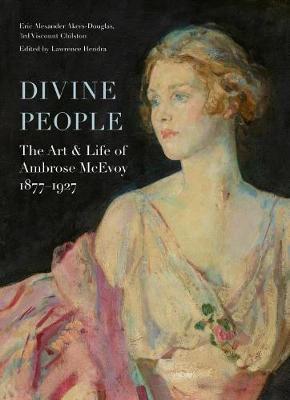Divine People: the Art and Life of Ambrose Mcevoy (1877-1927

Divine People: the Art and Life of Ambrose Mcevoy (1877-1927
Ambrose McEvoy (1877-1927) was a household name by 1915, with prominent socialites and debutantes vying for sittings in his Grosvenor Road studio. His patrons - typically young, well-known beauties - were dazzled not only by his remarkable ability to capture their character, but also his working methods, which one spectator described as an 'awe-inspiring sight'. McEvoy would illuminate his subject using electric lights, switching between different coloured bulbs until he reached the level and colour of light he desired. This 'Hollywood' look, with his glamourous subjects lit from below as if caught mid-speech on stage, is what he soon became best known for.
McEvoy had studied at the Slade School of Fine Art on the recommendation of James Abbott McNeill Whistler, and soon after established himself as a talented painter of portraits and interior scenes. He exhibited his first work at the New English Art Club in 1901 and subsequently attracted the attention of wealthy patrons and collectors. His first major commission came in 1906, for two large religious pictures for the Long Tower Church in Londonderry, where they remain to this day. After a period spent in Dieppe with Walter Sickert in 1909 McEvoy's style began to change and his handling became looser and more confident with bolder use of colour.
In 1915 he firmly established his position as a portrait painter following the exhibition of his work Madame at the National Portrait Society. '[Madame] holds you spellbound from the moment you enter the gallery,' wrote one critic. Two of his earliest admirers were Consuelo, Duchess of Marlborough and Lady Diana Cooper, who sat for their portraits in 1917 and 1918 respectively. In the early 1920s McEvoy als
PRP: 336.00 Lei
Acesta este Prețul Recomandat de Producător. Prețul de vânzare al produsului este afișat mai jos.
302.40Lei
302.40Lei
336.00 LeiLivrare in 2-4 saptamani
Descrierea produsului
Ambrose McEvoy (1877-1927) was a household name by 1915, with prominent socialites and debutantes vying for sittings in his Grosvenor Road studio. His patrons - typically young, well-known beauties - were dazzled not only by his remarkable ability to capture their character, but also his working methods, which one spectator described as an 'awe-inspiring sight'. McEvoy would illuminate his subject using electric lights, switching between different coloured bulbs until he reached the level and colour of light he desired. This 'Hollywood' look, with his glamourous subjects lit from below as if caught mid-speech on stage, is what he soon became best known for.
McEvoy had studied at the Slade School of Fine Art on the recommendation of James Abbott McNeill Whistler, and soon after established himself as a talented painter of portraits and interior scenes. He exhibited his first work at the New English Art Club in 1901 and subsequently attracted the attention of wealthy patrons and collectors. His first major commission came in 1906, for two large religious pictures for the Long Tower Church in Londonderry, where they remain to this day. After a period spent in Dieppe with Walter Sickert in 1909 McEvoy's style began to change and his handling became looser and more confident with bolder use of colour.
In 1915 he firmly established his position as a portrait painter following the exhibition of his work Madame at the National Portrait Society. '[Madame] holds you spellbound from the moment you enter the gallery,' wrote one critic. Two of his earliest admirers were Consuelo, Duchess of Marlborough and Lady Diana Cooper, who sat for their portraits in 1917 and 1918 respectively. In the early 1920s McEvoy als
Detaliile produsului










